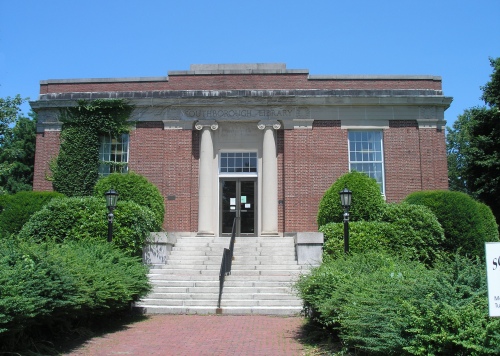Southborough Public Library (1911)

At a town meeting in Southborough in 1852, Col. Francis B. Fay offered $500 for a town library. Matching funds were raised and the Fay Library, located in the town hall, was officially started. It was one of the nation’s first free municipal libraries. Col. Fay, who served as a U.S. Representative, among other public offices, would later donate additional funds to the Library. A separate building for the Library was constructed in 1909-1911 on land donated by the Burnett family. The Southborough Library building was expanded in 1989.





